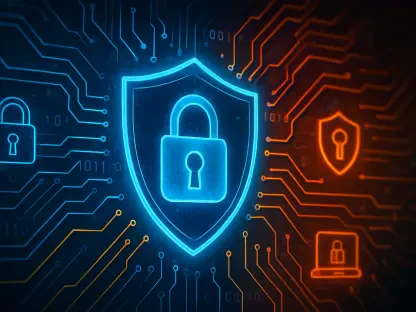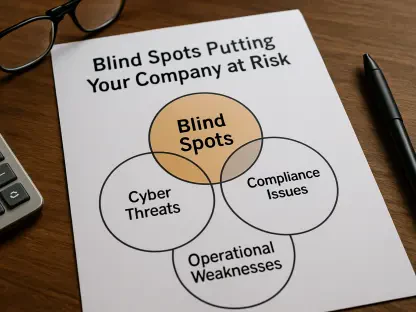Secure Access Service Edge (SASE) is becoming integral to network security and access control as it merges security with network connectivity. This significance is driven by an increasing shift towards cloud-based infrastructures, making SASE essential in modern tech ecosystems. SASE offers a convergence of network and security functions within cloud environments, paving the way for more agile and secure remote access. Its compatibility with the Zero Trust approach, which assumes no inherent trust and requires verification for every access request, further solidifies its relevance. As technology advances, SASE’s flexible architecture integrates well with new developments. The market is rapidly embracing SASE for its ability to cater to specific industry needs while promising a transformative effect on digital security and connectivity.
Understanding Secure Access Service Edge (SASE)
The Rise of Cloud-Native Security Platforms
Secure Access Service Edge (SASE) marks a shift in cybersecurity strategy by merging several security services into a unified cloud-based platform. This includes Secure Web Gateways, Firewall-as-a-Service, Zero Trust Network Access, and WAN optimization. By integrating these services, SASE offers a comprehensive and agile security solution. It simplifies the traditional complex security infrastructure by combining multiple facets of network protection into one. The holistic approach of SASE allows for better defense against a wide range of cyber threats while offering scalability. This fusion not only simplifies management and reduces the intricacy of security arrangements but also strengthens an organization’s ability to safeguard its network in a dynamic digital environment. SASE is gaining traction as it addresses the demands of modern enterprises for streamlined cybersecurity measures that keep pace with the evolving landscape of threats and remote workflows.
The Shift Towards a Cloud-centric Architecture
As companies increasingly adopt cloud-based technologies, the need for a new security paradigm becomes apparent. SASE (Secure Access Service Edge) provides an answer to this need with a model designed to secure access in a world without traditional corporate boundaries. SASE is uniquely suited to the modern workplace, where business resources are hosted across diverse cloud environments and the workforce is frequently on the move. Its architecture is built for the cloud era, combining network security functions with WAN capabilities to deliver secure, fast access to applications and data. This ensures that employees can work efficiently and safely from any location, on any device. SASE’s convergence of security and networking into a single, cloud-delivered service model addresses the complexities of the current digital landscape. As such, it is pivotal in catering to the demands of mobile users and the distributed nature of enterprise resources in the cloud age.
The Zero Trust Model in SASE
The Core Principle of Zero Trust Security
SASE (Secure Access Service Edge) pivots on the robust Zero Trust approach, which enforces a stringent “never trust, always verify” motto. This principle shifts away from the former, flawed belief that internal network elements are inherently secure. By integrating Zero Trust, SASE bolsters its defense mechanisms, relentlessly authenticating each access request to the network’s resources—whether that request originates from within the enterprise boundaries or beyond. This vigilant stance is crucial in contending with the evolving security landscape, marked by a diffuse workforce and ever-advancing cyber threats. SASE’s rigorous, adaptive posture is tailored to address these diverse challenges, ensuring that network security keeps pace with changing work environments and the sophisticated nature of modern cyber risks. It assumes that threat actors can be anywhere, and thus, authenticates and authorizes each session meticulously to protect organizational assets.
SASE’s Adaptation to Remote Work Environments
As remote work becomes the norm, the Secure Access Service Edge (SASE) framework is vital for safe and efficient work outside traditional offices. SASE delivers unified security policies across dispersed environments, ensuring that location doesn’t hinder security or performance. This is critical for businesses aiming to provide flexible work arrangements while maintaining robust security measures. With SASE, employees can securely access corporate networks from anywhere, fostering productivity without sacrificing safety. This framework’s introduction couldn’t be timelier, as it aligns with the global shift toward remote work, making it a key component in modern business infrastructure for a distributed workforce. SASE isn’t just a temporary solution but a long-term strategy to adapt to the evolving work landscape.
Advancements in SASE Technologies
Integration of SD-WAN in SASE Platforms
Software-Defined Wide Area Networking (SD-WAN) plays a crucial role in the evolution of Secure Access Service Edge (SASE) frameworks by enhancing network agility and performance. As businesses increasingly shift towards cloud-based services and digital operations, SD-WAN technologies within SASE architectures become indispensable. They streamline traffic flow, reduce latency, and make bandwidth utilization more efficient, ensuring that users can swiftly and reliably connect to necessary applications. This integration bolsters SASE’s promise of providing a secure and high-performing network environment that is well-suited for the dynamic needs of modern enterprises. Embracing SD-WAN within the SASE model is a strategic move that aligns with the digital transformation goals of companies, supporting their growth and success in the fast-paced digital economy.
Incorporating AI and ML for Enhanced Security
AI and ML are revolutionizing SASE ecosystems by enhancing their proactive threat identification and adaptive security protocols. Embedding these technologies into SASE infrastructures results in smarter surveillance, analytics, and actions against security risks, thereby fortifying the network defense mechanisms in place. Not only do they automate and simplify the handling of security incidents, but they also introduce predictive functions that are crucial for outpacing emerging threats. Consequently, the synergy of AI and ML with SASE is shaping a more agile and intelligent approach to cybersecurity, with these solutions learning from interactions to offer increasingly robust protections. By enabling quicker and more effective responses to potential hazards, AI and ML integration strengthens the security posture of networks, ensuring they are better equipped to handle the evolving landscape of cyber threats.
Market Dynamics and Competitive Analysis
Key Players and Strategic Developments
The Secure Access Service Edge (SASE) market is a dynamic arena with leading companies competing fiercely. These firms are continuously pushing the envelope by introducing sophisticated products, forging strategic partnerships, and pursuing acquisitions to enhance their service offerings. Such strategic initiatives are critical as they expand the market presence of these companies and enrich SASE solutions. The intent of these industry players is to seize the growth prospects presented by the SASE market, and their competitive actions are pivotal in steering the market’s direction. By doing so, they not only establish their dominance in the market but also cater to the evolving needs of their customers. These industry maneuvers are testament to the pivotal role that strategic developments play in the progression of the SASE landscape, signaling the importance of staying ahead in a market that is rapidly evolving.
Global Expansion and Compliance Efforts
As Secure Access Service Edge (SASE) providers branch out internationally, they are keenly aware of different regional regulatory requirements. These providers customize their services to align with the specific compliance and legal demands of various countries. Such localization ensures that companies using SASE solutions can comply with their region’s specific legal obligations. This tailored approach is fostering quicker adoption of SASE technologies globally. As providers adjust their offerings to suit the disparate legal landscapes, businesses worldwide are increasingly able to tap into the advantages of SASE, a testimony to the technology’s versatility and adaptability. This smart customization is essential for the technology’s success across diverse jurisdictions, enabling a seamless global expansion of these services while respecting the unique compliance standards in each market.
SASE Implementation Across Industries
Sector-Specific SASE Applications
Industries across various sectors are adapting Secure Access Service Edge (SASE) to bolster security amidst unique challenges. In the IT realm, SASE is essential for managing complex multi-cloud setups by providing comprehensive network control and security. The BFSI sector relies on SASE for securing sensitive financial data and transaction processes, leveraging its robust protection capabilities.Manufacturers are turning to SASE to safeguard their interconnected systems and precious intellectual property, recognizing the value of an integrated approach to cybersecurity. SASE offers these diverse industries a cohesive solution for network and security governance, critical for business continuity in an era where digital threats are ever-evolving and security breaches are costly. By unifying network and security services, SASE streamlines operations and enhances overall security posture, catering to the specific demands of IT, BFSI, manufacturing, and beyond.
Geographic Reach of the SASE Market
The Secure Access Service Edge (SASE) market is witnessing a global expansion, crossing into various regions such as North America, Europe, and the Asia-Pacific. Its widespread applicability is evidenced by the region-specific tailoring of SASE solutions to meet diverse local demands, cultural sensibilities, and compliance with regional regulations. With each geographical area presenting unique market forces, there is a marked variation in SASE adoption trends. These differences underscore the significance of localized strategy formulation in promoting the uptake of this advanced technological framework around the world. As SASE continues to gain momentum, the role of region-specific approaches becomes increasingly important in facilitating its integration into different markets and ensuring relevance across the international landscape.
Emerging Trends Shaping the SASE Landscape
Remote Workforce Security Considerations
As telecommuting grows, businesses are concentrating on secure and flexible access solutions, particularly Secure Access Service Edge (SASE) technology, which has seen increased investment. SASE offers dynamic, scalable security that integrates well with the dispersed nature of remote workforces, safeguarding data and adhering to corporate guidelines. The secure access needs of remote workers have become a key component of organizational strategy, given the necessity of remote work for business resilience. SASE’s all-encompassing approach not only addresses the current demands but also prepares enterprises for future security and access challenges. This shift towards a more secure, remote-friendly infrastructure reflects a broader recognition that flexible work arrangements are here to stay, and the advanced security measures of SASE are critical in supporting this new reality.
Convergence of Edge Computing with SASE
As edge computing gains prominence by bringing computation and data storage closer to the source, it naturally integrates with Secure Access Service Edge (SASE) to enhance security frameworks. This integration is crucial because edge computing requires strong, localized security measures, which SASE provides. SASE combines wide area networking (WAN) and security services into a single, cloud-delivered service model, ensuring secure and fast cloud adoption as well as direct internet access for resources.The symbiotic growth of edge computing and SASE is a powerful trend that’s reshaping the future of organizational security and network infrastructure. By coalescing the immediacy of edge computing with the comprehensive security that SASE offers, businesses can address the growing need for fast, secure access to applications and data, regardless of location. This transformation reflects the evolving landscape where security is no longer confined to a central location but is distributed across the network edge, aligning with the way enterprises are conducting their operations in an increasingly digital world.
The Transformative Impact of SASE
Reinventing Network Security for the Digital Age
SASE, or Secure Access Service Edge, is revolutionizing network security for the digital age. It merges cutting-edge technologies into a unified framework, tailored for a workforce that’s no longer bound to the office and faces an increasingly complex assortment of cyber threats. SASE’s design is not just about synchronizing security with network connectivity—it’s becoming a vital element within them, seamlessly intertwined. As we look to the future, SASE is poised to further innovate and establish itself as an indispensable attribute of network architecture, ensuring both security and accessibility are simultaneously enhanced. This evolution signifies a new era where advanced protection methods are inherently integrated into the fabric of organizational connectivity, heralding a promising horizon of intelligent and comprehensive cybersecurity solutions.









